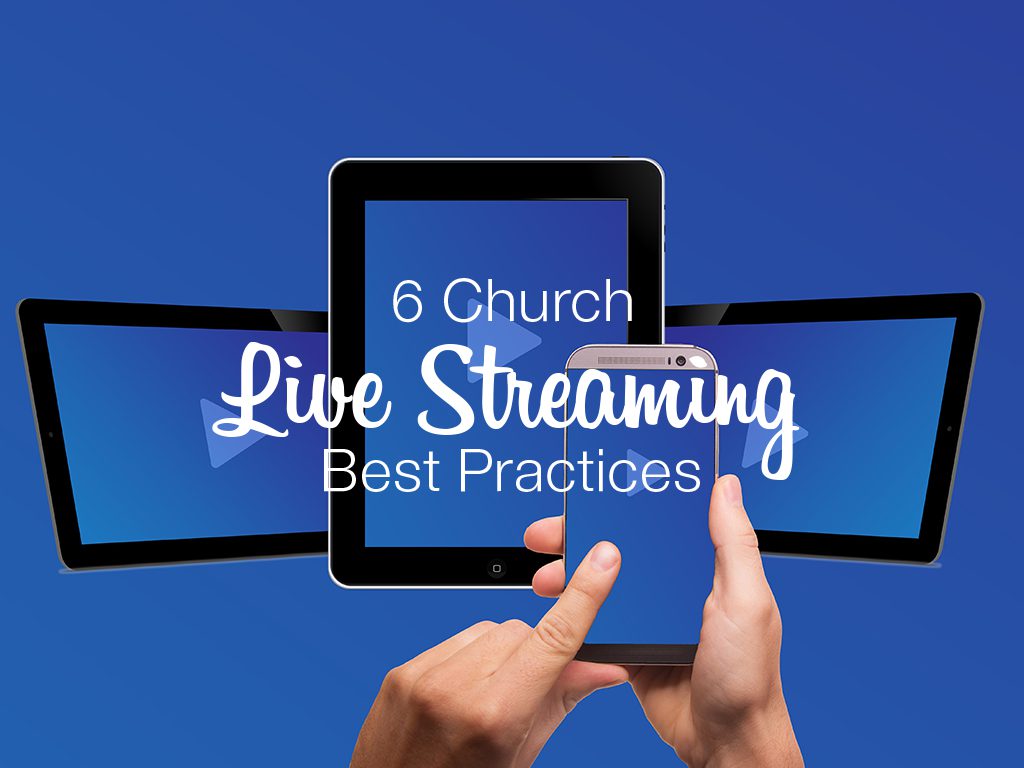Congrats – you’ve implemented a live streaming solution within your church! This feat normally comes with some hiccups along the way, and it’s taken research, time, and resources to get there.
Ok… now what?
It’s easy to get wrapped up in all of the preparation that comes with choosing the right technology, streaming platform, and team members to get live streaming in place. Searching the Internet can offer a variety of resources to learn how live streaming works and what equipment is needed. To be really successful in broadcasting your services and events, it’s important to learn from experts and live streaming veterans about what to do with the solution you have. With that in mind, we’ve polled our customer support team experts to share six technical recommendations and audience considerations to ensure your church offers the best live streaming experience for your audiences.
Best Practice #1 – Always test before going live.
Ensuring all of your equipment – video, audio, and all devices – are online and operational prior to broadcasting a service or event is a big piece of advice that our veterans recommend. This suggestion isn’t just for novice team members or churches that are new to live streaming. Including a test run before every broadcast is key to providing a quality experience for all.
Best Practice #2 – Limit the access and usage of a computer used for streaming.
If a church is utilizing a computer for streaming purposes, we recommend limiting both the access to, and handling of, it. We recognize that some churches have a limited budget and use computer resources for multiple projects. Limiting the computer’s use to only streaming purposes ensures that the settings and programs used for streaming are not accidentally altered or changed – this is often the main cause when a customer calls our support line, confused why their streaming equipment is not working correctly.
Best Practice #3 – Schedule adequate time.
In reference to StreamSpot SyncTM, StreamSpot’s patent-pending 100% automated streaming software, it’s best to allow enough time before and after your stream to ensure that the entire broadcast is captured. Life happens, and sometimes a service and event may take longer than usual. It’s a shame if an online audience misses a portion of a broadcast. The good news: it’s easy to go back through your online archive and cut off any unnecessary footage if needed. (For those who do not have our automation, it’s recommended to make sure your technical crew and camera operators plan to stay a little longer after the broadcasted service or event; it’s disruptive if the broadcast ends before the event because someone was not available to man the equipment.)
Best Practice #4 – Include the online audience as part of your service.
Our most successful churches make an effort to look at the camera and acknowledge their online audience. This includes including your viewers in the ‘Welcome’ greeting. Promoting your live streaming services during your service will also educate church members who may want to re-watch the service again or tune in for more church events.
Best Practice #5 – Focus in and get close-up shots of participants.
More for special events like weddings, baptisms, and first communions, a streaming experience can be remarkably improved with this added effort. These participants love to watch the event archives and feel the day was even more special by adding this extra touch.
Best Practice #6 – Use social media to spread the Word.
Promoting your live and on-demand content on social media, both before and after an event, can help bring more visitors to your website and share the Word with your followers.
If you’re interested in more free resources and live streaming advice that is specific for your church or school, reach out to the StreamSpot team by sending me an email, visiting our website, or contacting us at 1-877-738-7887.





Yeah, following above mentioned points and using tools like on premise R-HUB live streaming servers, one can effectively live stream from anywhere anytime. It works on Windows, MAC, Android, iOS etc.
[…] 6 Church Live Streaming Best Practices – ChurchTechToday.com […]
Jenn, I’d include at least a few wide shots, too. The online congregation has no context without them, so larger shots alone may get confusing.
Hey Michael. I write on live-streaming for church production (and sometimes here too). There are licenses you can get from either CCLI or Church Copyright Association that make live-streaming music legal. With that said, YouTube doesn’t have anyone to tell those about, so you may still have problems. That’s why I tell people to use another live-streaming host.
[…] 6 Church Live Streaming Best Practices Do you live stream? […]
[…] Jenn Rhodes shares six things you can do to make your church’s live stream as effective and troubl… […]
With all the issues with music is it better just to do the sermon